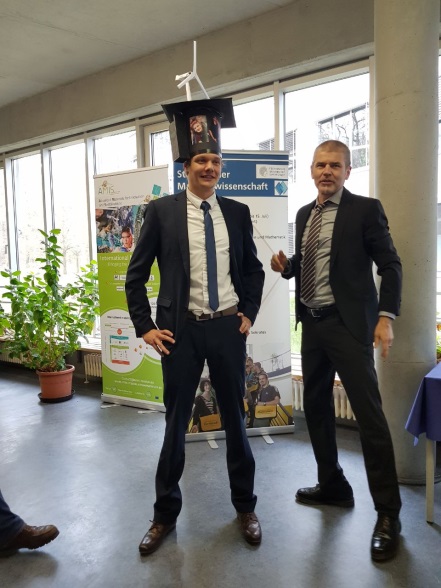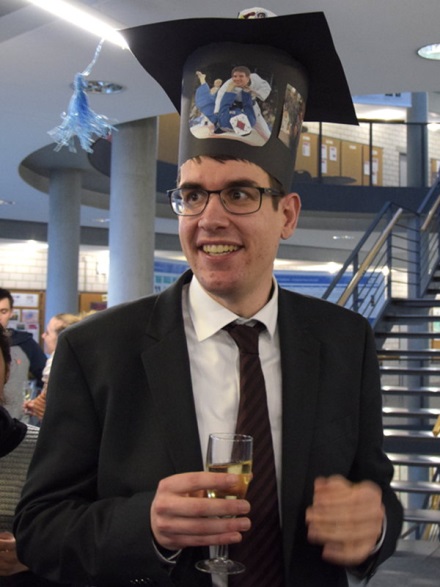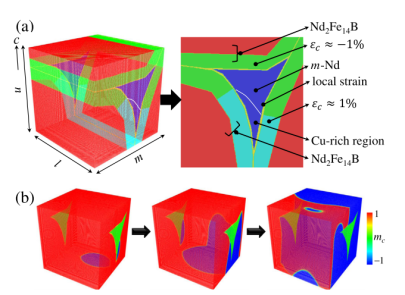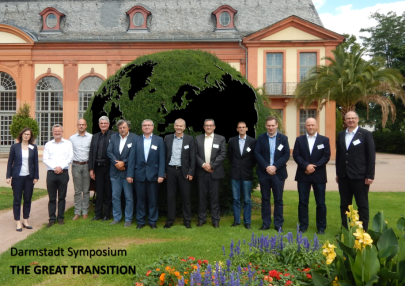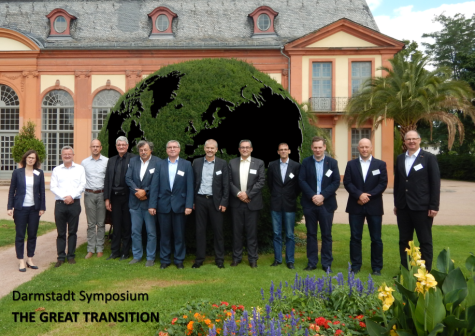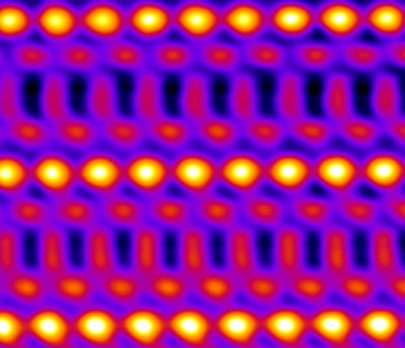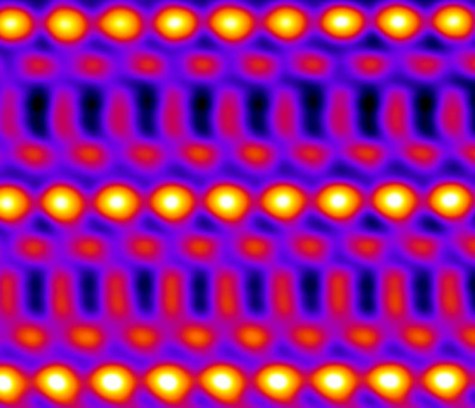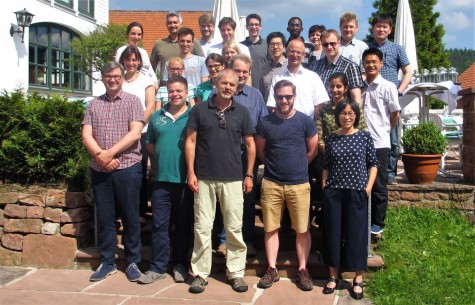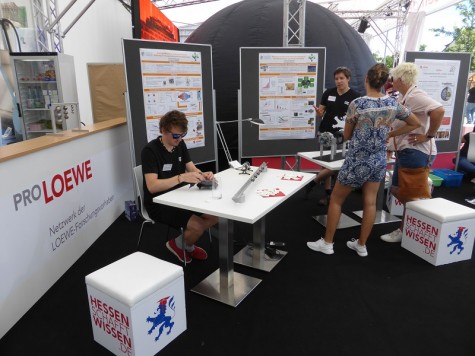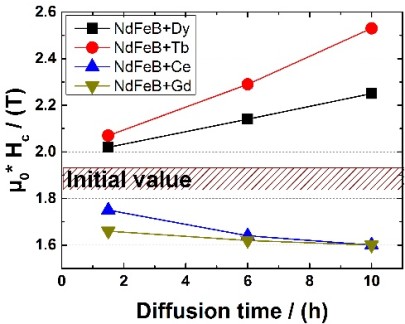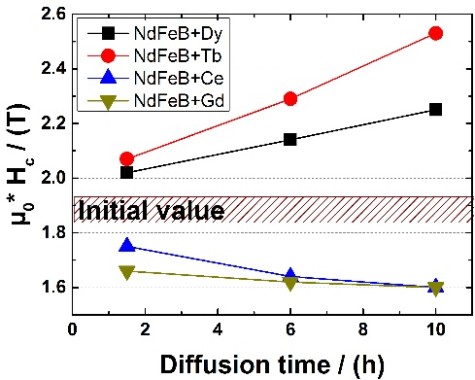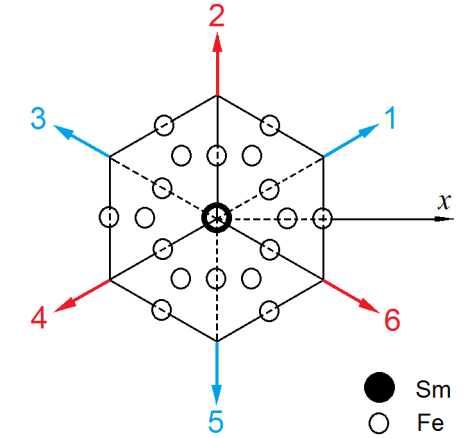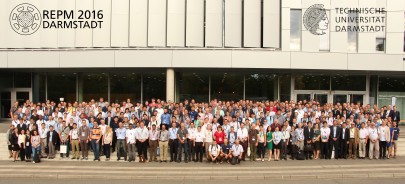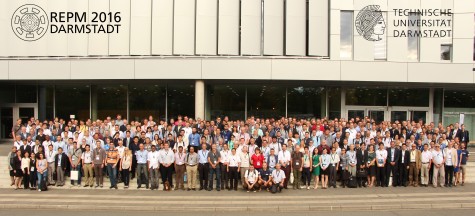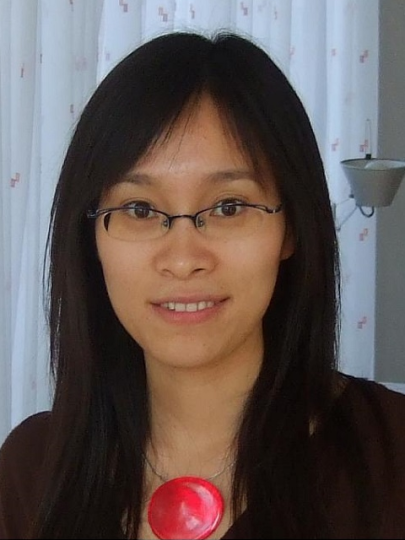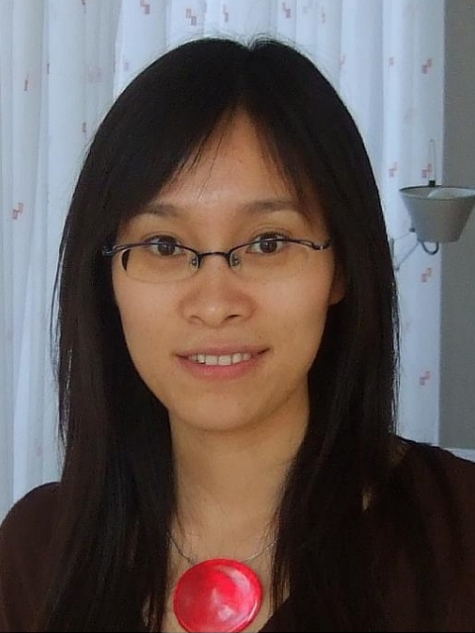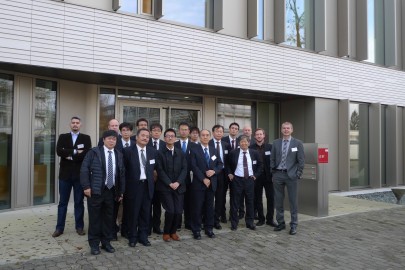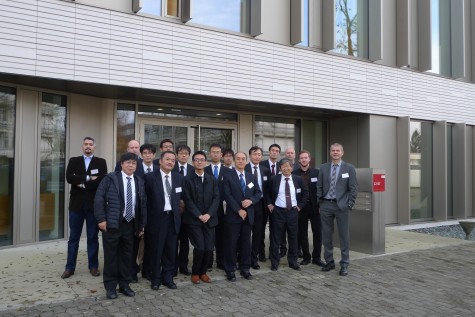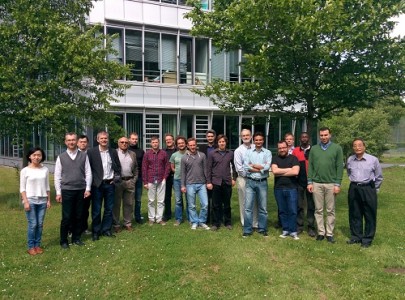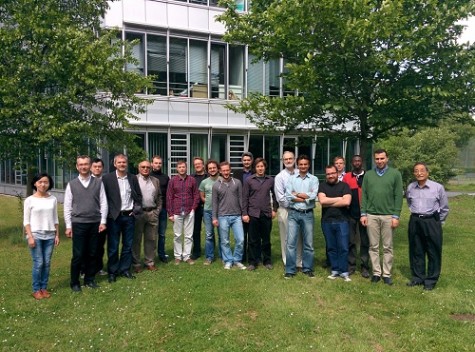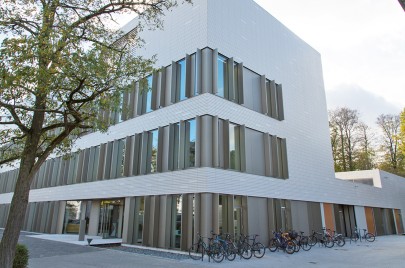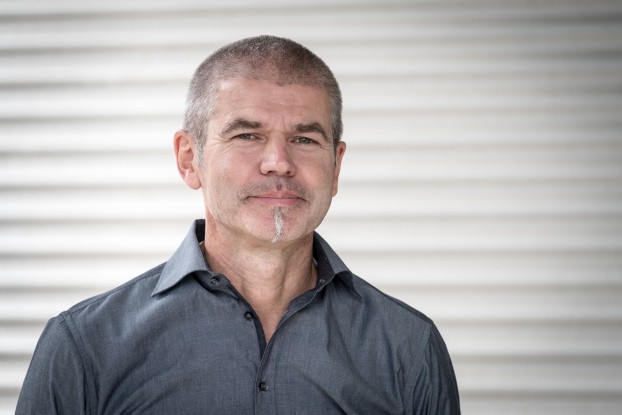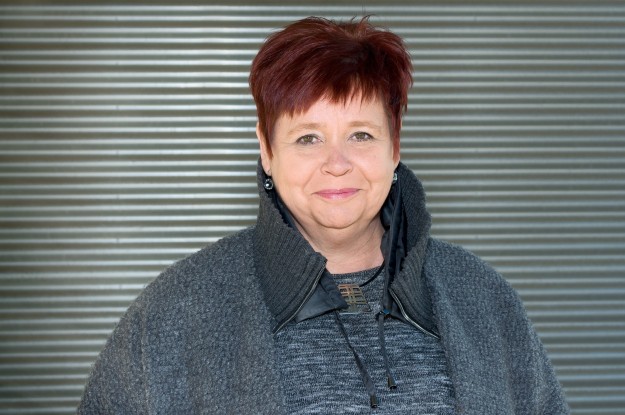News 2018
PHD Graduation in FM-Group
We congratulate our colleague Tim Oliver Helbig to the successful defense of his doctoral thesis “Demagnetizing and hardening mechanisms in Nd-Fe-B and Sr-hexaferrite permanent magnets” on Friday the 26th of October 2018. After the exam the group celebrated together the after-defense ceremony.
We thank him for the years we could work together and wish him good luck for his future career. Let´s stay in touch.
Wir gratulieren Dr. Fabian Rhein
Wir gratulieren unserem Kollegen und RESPONSE assoziiertem (ehemaligen) Doktoranden Dr. Fabian Rhein zu einer erfolgreich bestandenen Verteidigung seiner Doktorarbeit mit dem Titel Nanoskalige Magnete und Magnetkomposite auf Ferritbasis. Obwohl die Arbeit selbst extern bei der SIEMENS AG angefertigt wurde, fand auch ein großer Teil der Arbeit an der TU Darmstadt statt was sich auch in gemeinsamen Publikationen widerspiegelt. Nach der Überreichung des Doktorhutes durch den Doktorvater Oliver Gutfleisch, erfolgte die weitere Feier bei Speis und Trank in der nahegelegenen Darmstädter Brauerei. Hier musste Fabian zudem in einer inoffiziellen Nachprüfung seine Kenntnisse über die Geschichte der SIEMENS AG unter Beweis stellen, sowie seine Kenntnisse regionaler Küche.
X-ray diffractometer for the investigation of temperature- and magnetic field-induced structural phase transitions
Tom Faske and Wolfgang Donner
J. Appl. Cryst. (2018). 51
https://doi.org/10.1107/S1600576718004892
This article reports the development and characterization of a laboratory-based high-resolution X-ray powder diffractometer equipped with a 5.5 T magnet and closed-cycle helium cryostat that is primarily designed for the investigation of magneto-structural phase transitions. Unique features of the diffractometer include the position-sensitive detector, allowing the collection of an entire diffraction pattern at once, and the high energy resolution with Mo Kα1 radiation. The ability to utilize a lower energy resolution but higher photon flux by switching to an X-ray mirror monochromator makes it a versatile setup for a variety of compounds. In this contribution, details of the design and performance of the instrument are presented along with its specifications.
In-situ magnetic force microscopy analysis of magnetization and demagnetization behavior in Al3+ substituted Sr-hexaferrite
F. Rhein, T. Helbig, V.Neu, M. Krispin, O. Gutfleisch
Acta Materialia 146 (2018) 85-96
https://doi.org/10.1016/j.actamat.2017.12.010
The sintering temperature of an Al3+substituted Sr-hexaferrite compositewas systematically varied from 1180°C to 1280°C resulting in different microstructures. The grain size was found to range from a few hundred nanometers to several hundred micrometers depending on Al content and sintering temperature. Adding an Al substituted powder to a commercial powder increased the coercivity from 360 mT to 470 mT, at the same time, decreasing remanence from 350 mT to 305 mT. Magnetization and demagnetization processes from the thermally demagnetized state (TDS) and DC-demagnetized state (DCD) have been investigated systematically by in-situ magnetic force microscopy (MFM) under magnetic field.
From the surface domain contrast a polarizationwas derived which quantitatively matches the global i.e. bulk polarization obtained by superconducting quantum interface device (SQUID) magnetometry. The shape of the initial polarization curve and the polarization from the DCD state were correlated with the in-situ MFM data revealing a distinctly different magnetization behavior depending on grain size. The presented results enable a better understanding of local nucleation mechanisms, global influences of pinning centers and further opportunities to improve rare earth (RE) free permanent magnets based on ferrites.
Wir gratulieren Dr. Dominik Gölden
Wir gratulieren unserem Kollegen Dr. Dominik Gölden zur erfolgreichen Verteidigung seiner Doktorarbeit mit dem Titel Magnetocrystalline anisotropy of iron thin films with interstitial nitrogen and boron am 24ten Januar 2018. Nach bestandener Prüfung und dem Überreichen des traditionellen Doktorhutes, wurde angestoßen und noch bis spät in den Abend gefeiert. Bedingt durch den unmittelbaren Wechsel in die Industrie und den neuen Job, war dies auch gleichzeitig die inoffizielle Abschiedsfeier von Dominik. Das verbleibende RESPONSE Team wünscht Dominik viel Glück und Erfolg bei seinem weiteren beruflichen Werdegang.
Origin of field-induced discontinuous phase transitions in Nd2Fe17
L. V. B. Diop, M. D. Kuz’min, K. P. Skokov, Y. Skourski, and O. Gutfleisch
Phys. Rev. B 97, 054406 (2018)
https://doi.org/10.1103/PhysRevB.97.054406
Magnetic properties of a trigonal ferromagnet Nd2Fe17 have been studied on single crystals in steady (14 T) and pulsed (32 T) magnetic fields. The easy-magnetization direction lies close to the [120] axis, deviating from the basal plane by 2.9° (at 5 K). Of particular interest is the low-temperature magnetization process along the high-symmetry axis [001], which is the hard direction. This process is discontinuous and involves two first-order phase transitions (FOMPs). One of them (at 20 T) is a symmetry FOMP similar to that observed in Sm2Fe17. The second transition (at 10.4 T) is without precedent: as the magnetization turns abruptly towards the applied field, it also changes its azimuthal orientation (the angle φ) by 60°. Both transitions can be reasonably accounted for by the presence of a significant sixth-order trigonal anisotropy term.
News 2017
Evolution of anisotropy in bcc Fe distorted by interstitial boron
Dominik Gölden, Hongbin Zhang, Iliya Radulov, Imants Dirba, Philipp Komissinskiy, Erwin Hildebrandt, and Lambert Alff
Technische Universität Darmstadt, Institute of Materials Science, Alarich-Weiss-Str. 2, 64287 Darmstadt, Germany
In this article we investigated the evolution of magnetic anisotropy in bcc Fe as a function of interstitial boron atoms in thin films grown by molecular beam epitaxy. Crystalline samples with the desired stoichiometry are obtained at growth temperatures of around 300°C.
The thermodynamic nonequilibrium conditions during film growth allowed us to stabilize an total boron content of about 14 at. % accompanied by lattice tetragonalization. When considering the effective boron interstitial concentration, determined by X-ray photoelectron spectroscopy, the achieved tetragonalization is similar to the material α’-Fe8Nx.
The c/a ratio scaled linearly with the boron content up to a maximum value of 1.05 at 300°C substrate growth temperature, with a room-temperature magnetization of 1450 emu/cm3. In contrast to nitrogen interstitials, the magnetic easy axis remained in-plane with an anisotropy of approximately −5.1 × 106 erg/cm3. Density functional theory calculations using the measured lattice parameters confirm this value and show that boron local ordering indeed favors in-plane magnetization. Given the increased temperature stability of boron interstitials as compared to nitrogen interstitials, this study will help to find possible ways to manipulate boron interstitials into a more favorable local order.
REGINA – Globale Industrien Seltener Erden und neue Anwendungen
Ein Konsortium aus acht deutschen wissenschaftlichen Institutionen und Unternehmen inklusive der TU Darmstadt wird unter der Leitung der Fraunhofer-Projektgruppe IWKS gemeinsam mit brasilianischen Partnern aus Wissenschaft und Wirtschaft daran arbeiten, eine Prozesskette zur Herstellung und Vermarktung von Hochleistungspermanentmagneten aus brasilianischen Ressourcen aufzubauen. Gesamtziel ist es, eine Grundlage für die industrielle Umsetzung der Wertschöpfungskette, ausgehend von gemischten Seltenerdoxiden aus brasilianischen Minen, über die Seltenerdaufbereitung, bis hin zum fertigen Nd-Fe-B-Magneten zu schaffen. Der Aufbau einer brasilianischen Nd-Fe-B-Magnetproduktion soll Brasilien als strategischen und verlässlichen Lieferanten von Seltenen Erden in Deutschland etablieren. Diese Magnete sollen den auf chinesischen seltenen Erden basierenden Magneten leistungsmäßig vergleichbar, jedoch im Hinblick auf Umwelt- und Sozialverträglichkeit überlegen sein und das Prädikat „grüner Magnet“ für den Einsatz in grünen Technologien verdienen.
Die TU Darmstadt unter der Leitung von Prof. Gutfleisch (Fachgebiet Funktionale Materialien) wird sich innerhalb dieses Konsortiums speziell mit der Optimierung der Legierungen sowie der Synthese und hochauflösenden Charakterisierung der Magnete beschäftigten und diese Entwicklung vorantreiben. Das Forschungsvorhaben ist auf drei Jahre angelegt und wird vom Bundesministerium für Bildung und Forschung (BMBF) mit ca. 2,9 Mio. im Rahmen des Förderschwerpunktes »CLIENT II – Internationale Partnerschaften für nachhaltige Innovationen« im Rahmenprogramm »FONA – Forschung für nachhaltige Entwicklung« gefördert. Davon werden 0,57 Mio. € für die Optimierung der Legierungen und Magnete der Arbeitsgruppe Gutfleisch bereitgestellt. Projektstart war im August 2017.
Mehr Informationen im offiziellen Pressebericht (opens in new tab).
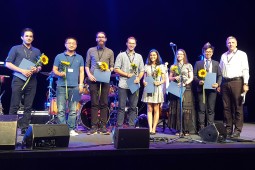
Best Poster Award for Darmstadt Electron Microscopists at the Microscopy Conference 2017
Alexander Zintler gewann den Preis für das beste Poster in der Session „Material Science, Energy-related Materials“ für die Arbeit mit dem Titel “FIB based fabrication of an operative Pt/HfO2/TiN device for resistive switching inside a transmission electron microscope”. Dieser Beitrag stellt auch einen wichtigen Teil des kürzlich bewilligten DFG-Projekts “Operando investigation of resistive switching in electron transparent lamellae of HfOx based RRAM devices” (Molina-Luna, Alff). Die nächste länderübergreifende Mikroskopie-Konferenz findet im Jahr 2021 in Wien statt.
Reference:
A. Zintler, U. Kunz, Y. Pivak, S.U. Sharath, S. Vogel, E. Hildebrandt, H.-J. Kleebe, L. Alff and L. Molina-Luna. FIB based fabrication of an operative Pt/HfO2/TiN device for resistive switching inside a transmission electron microscope, Ultramicroscopy, Volume 181, October 2017, Pages 144-149
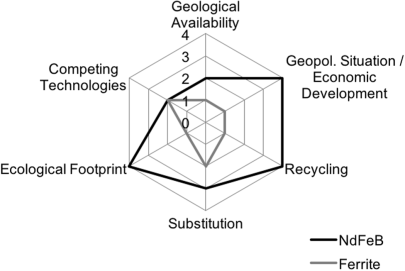
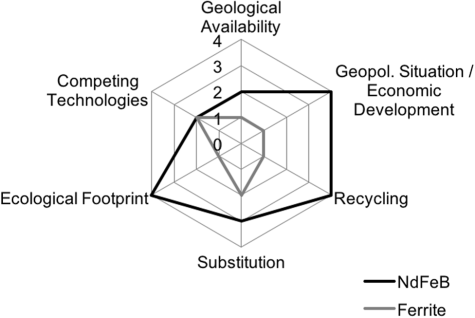
TOPICAL REVIEW: The 2017 Magnetism Roadmap
D. Sander et al.
Journal of Physics D: Applied Physics, Volume 50, Number 36 (2017) 363001
This Topical Review gives an accurate snapshot of the world of magnetism in 2017. It focuses e.g. on the significantly growing interest in magnetism and magnetic materials in relation to energy applications. The three core pillars of magnetism, namely magnetic materials, magnetic phenomena and associated characterization techniques, as well as applications of magnetism are addressed by an international group of 14 experts. The 2017 Magnetism Roadmap article provides a frame that will enable the reader to judge where each subject and magnetism research field stands overall today and which directions it might take in the foreseeable future.
http://iopscience.iop.org/article/10.1088/1361-6463/aa81a1/meta
CeCo5 thin films with perpendicular anisotropy grown by molecular beam epitaxy
S. Sharma, E. Hildebrandt, M. Major, P. Komissinskiy, I. Radulov, L. Alff
Journal of Magnetism and Magnetic Materials 452 (2018) 80-85
https://doi.org/10.1016/j.jmmm.2017.12.042
The interest in thin films with perpendicular magnetic anisotropy (PMA) is growing because of their potential applications in ultra-high density magnetic storage and nano-scale spintronic devices. One approach to achieve PMA is the c-axis (easy axis) textured growth of materials which possess strong intrinsic magnetocrystalline anisotropy that is large enough to overcome the shape anisotropy of thin films. The family of Co based rare-earth (RE) intermetallic compounds of the form, RECo5 are known for their extremely large uniaxial magnetocrystalline anisotropy. Among all rare-earth elements, Ce is one of the lowest priced having the highest distribution percentage across the rare-earth deposits. In this work, buffer-free, highly textured (001) oriented CeCo5 thin films showing perpendicular magnetic anisotropy were synthesized on (001) Al2O3 substrates by molecular beam epitaxy. The first anisotropy constant, K1, as measured by torque magnetometry was 0.82 MJ/m3. A maximum coercivity of 5.16 kOe with a negative temperature coefficient of -0.304%K-1 and a magnetization of 527.30 emu/cm3 was measured perpendicular to the film plane at 5 K. These magnetic parameters make CeCo5 a potential candidate material for spintronic and magnetic recording applications.
Multiscale Examination of Strain Effects in Nd-Fe-B Permanent Magnets
Min Yi, Hongbin Zhang, Oliver Gutfleisch, and Bai-Xiang Xu
Physical Rev. App. 8 (2017) 014011
In permanent magnets which are featured in high-coercivity and high-maximal-energy products, local strain around the grain boundaries and triple junctions is thought to reduce the local magneto-crystalline anisotropy and thus the coercivity degrading the magnetic performance. In this article we performed first-principles and micromagnetic study on the strain effects in Nd-Fe-B permanent magnets. We found out that magnetocrystalline anisotropy (K) is insensitive to deformation along the c axis, and that a-b in-plane shrinkage is responsible for K reduction. Micromagnetic simulations of Nd-Fe-B magnets using first-principles results show that a 3% to 4% local strain in a 2-nm-wide region near the interface around the grain boundaries and triple junctions leads to a negative local K and thus, remarkably, decreases the coercivity by about 60%, or 3 to 4 T.
Darmstadt Symposium
The great transition – The importance of critical metals for green energy technologies
On July 13, 2017, we hosted a one-day symposium at the Orangerie in Darmstadt focusing on how the supply situation of strategic metals can directly impact on the development and cost of advanced materials which form the basis for green energy technologies. The efficient utilisation or substitution of these critical elements with more sustainable and earth abundant elements is the big challenge for the Great Transition from a fossil fuel based society to an economy built on renewable energies. Well-known experts from academia and industry gave Key-note lectures addressing the substitutionability of critical metals and its possible side effects in terms of entering new dependencies. With more than 150 participants the symposium found a very positive resonance and we will make the Darmstadt Symposium a regular event in the future.
Atomic structure and domain wall pinning in samarium-cobalt-based permanent magnets
M. Duerrschnabel, M. Yi, K. Uestuener, M. Liesegang, M. Katter, H.-J. Kleebe, B. Xu, O. Gutfleisch & L. Molina-Luna
Nature Communications 8:54 (2017)
A higher magnetization by increased iron contents can yield larger energy products in rare-earth Sm2Co17-type pinning-controlled permanent magnets, which are of importance for high-temperature industrial applications. We present model magnets with an increased iron content based on a unique nanostructure and -chemical modification route using Fe, Cu, and Zr as dopants. The iron content controls the formation of a diamond-shaped cellular structure that dominates the density and strength of the domain wall pinning sites. Using ultra-high-resolution experimental and theoretical methods, we revealed the atomic structure of the single phases present and established a direct correlation to the macroscopic magnetic properties.
doi:10.1038/s41467-017-00059-9
https://www.nature.com/articles/s41467-017-00059-9
https://www.tu-darmstadt.de/vorbeischauen/aktuell/einzelansicht_181952.de.jsp
Hessentag in Rüsselsheim
Wissenschaftler des LOEWE-Projektes „RESPONSE“ der TU Darmstadt waren auf dem diesjährigen Hessentag in Rüsselsheim vertreten.
Ziel dieses Forschungsprojektes ist es, innovative und leistungsstarke Magnetmaterialien zu erforschen und neue Wege zum ressourcenschonenden Einsatz der Seltenen Erden zu finden.
Interessante Experimente und Exponate veranschaulichten das Thema Magnetismus .
Coole Forschung
Der Europäische Forschungsrat (ERC) zeichnet Professor Oliver Gutfleisch mit einem „ERC Advanced Grant“ aus und fördert ihn über einen Zeitraum von fünf Jahren mit 2,5 Millionen Euro. Damit wird die herausragende Forschung an der TU Darmstadt zur Substitution kritischer Roh- und Werkstoffe für Energietechnologien gewürdigt.
Grain boundary diffusion of different rare earth elements in Nd-Fe-B sintered magnets by experiment and FEM simulation
Konrad Löwe, Dimitri Benke, Christian Kübel, Tim Lienig, Konstantin Skokov, Oliver Gutfleisch
Acta Materialia 124 (2017) 421-429
In the present work, we explore the influence of a surface-bulk coercivity gradient in Nd-Fe-B magnets produced by the Grain Boundary Diffusion Process (GBDP) on the overall coercivity. In the study we diffused four different rare earth elements (Dy, Tb, Ce and Gd) sintered Nd-Fe-B magnets. We find that Tb diffuses significantly faster than Dy, Ce diffuses slightly slower than Dy, and that the overall coercivity decrease is similar for Ce and Gd. High-resolution scanning transmission electron microscopy shows the nano-scale distribution of Tb around the grain boundaries. Finally, a simple model for the magnetization reversal in grain boundary diffusion processed gradient Nd-Fe-B magnets was developed and implemented into a FEM software. Our calculated demagnetization curves correspond very well for the Dy and Tb samples, but deviate significantly for Ce and Gd.
News 2016
Synthesis, morphology, thermal stability and magnetic properties of α-Fe16N2 nanoparticles obtained by hydrogen reduction of γ-Fe2O3 and subsequent nitrogenation
I. Dirba, C.A. Schwöbel L.V.B. Diop, M. Duerrschnabel, L. Molina-Luna, K. Hofmann, P. Komissinskiy, H.-J. Kleebe, O. Gutfleisch
Typical synthesis of α″-Fe16N2 nanoparticles involves reduction of iron oxides by hydrogen at elevated temperatures which is disadvantageous due to the particle coalescence. Here we report on a process for reduction of iron oxides at elevated pressures and show that by increasing hydrogen pressure from atmospheric to 53 MPa, it is possible to reduce the reaction temperature from 663 K down to 483 K, resulting in phase-pure α-Fe nanoparticles without noticeable particle growth. By subsequent nitrogenation in an ammonia flow, fine, 99% phase-pure α″-Fe16N2 nanoparticles could be synthesized. The reduction temperature and the respective particle size has a significant influence on the nitrogenation step. α″-Fe16N2 nanoparticles exhibit semi-hard magnetic properties with Ms(0) = 215 Am2 kg−1, μ0Hc = 0.22 T, TC = 634 K and exchange stiffness Ac = 6.84 pJ m−1, Aa,b = 7.53 pJ m−1. Synthesis conditions, microstructure, chemical composition and thermal stability of the nanoparticles are systematically studied and correlated with the observed magnetic properties.

Six new members of the JEMS International Advisory have been appointed
The newly-appointed members are: Oliver Gutfleisch (Darmstadt), Florence Gazeau (Paris), Larissa Panina (Moscow), Yoshichika Otani (Tokyo), Bert Koopmans (Eindhoven) and Ekkes Brück (Delft). They will start now a six year term.
2016-11-01
Magnetic anisotropy of Sm2Fe17 single crystals
L. V. B. Diop, M. D. Kuz’min, K. P. Skokov, D. Yu. Karpenkov and O. Gutfleisch
Phys. Rev. B 94, 144413 (2016)
The previously accepted notion that the spontaneous magnetization of Sm2Fe17 lies in the basal plane of the crystal is true only approximately, and then only around room temperature. At low temperatures the magnetization, whose orientation is not fixed by the symmetry, is found to deviate from the basal plane by as much as 10°. The threefold symmetry axis is a hard direction; to magnetize the crystal in this direction a magnetic field of about 9 T is required. The hard-axis magnetization arrives at saturation discontinuously, by way of a first-order phase transition (FOMP). The behavior is a general one for trigonal ferromagnets where K1< 0 and the leading trigonal anisotropy constant is nonzero, K'2 ≠ 0. Although of universal occurrence, the FOMP is only visible at low temperatures, where it is accompanied by a magnetization anomaly of sufficient size.
RIEPAM:
Research Infrastructures as an Enabling Platform for Advanced Materials
The project provides a design and characterization platform for new materials in the early stages of the innovation chain. The KAVA partners will offer their research infrastructure and expertise to European partners from (applied) research institutes and industry (large companies and SME’s) working within the KIC Raw MatTERS theme “Substitution of critical and toxic materials in products and for optimised performance”. The project creates an European access point for an all-embracing structural, chemical, optical, electronic and magnetic characterisation protocol for technologically promising materials which may be used in e.g. new substitutional optical, electronic and magnetic devices in whatever form (crystal, thin film, powder, molecule, nanostructure or liquid solution).
TU Darmstadt together with Fraunhofer IWKS will provide sophisticated facilities for comprehensive characterization of magnetic properties in wide temperature, pressure and field ranges.
REPM 2016 Conference
Chaired by Prof. Oliver Gutfleisch, Technical University of Darmstadt and Fraunhofer IWKS, and Dr. Matthias Katter, Vacuumschmelze GmbH.
Find out more on the REPM 2016 website.
Magnetokalorischer Demonstrator mit rezyklierten Permanentmagneten bei der REPM 2016 in Darmstadt gezeigt
Unter dem Magnetokalorischen Effekt versteht man die Temperaturänderung eines magnetokalorischen Materials durch das Anlegen bzw. durch das Entfernen eines Magnetfeldes. In Form eines Kreisprozesses kann mittels dieser Temperaturänderung ein Kühlgerät konstruiert werden.
Ein solches Kühlgerät benötigt ein sich veränderndes Magnetfeld, das üblicherweise von NdFeB-Permanentmagneten bereit gestellt wird. Der ökologische Fußabdruck dieser Magnete stellt jedoch ein Hindernis für die Etablierung der magnetischen Kühlung als eine neuartige, ressourcen- und energieeffiziente Technologie dar. Um dieses zu überwinden, wurde innerhalb von RESPONSE, der Graduiertenschule Energy Science, der Arbeitsgruppe Funktionale Materialien und dem externen Partner Urban Mining, USA, ein magnetokalorischer Demonstrator mit rezyklierten Permanentmagneten entwickelt und gebaut.
Dieser wurde bei der REPM 2016 in Darmstadt vorgestellt und gezeigt. Am RESPONSE-Stand konnte man beobachten, wie sich eine Temperaturspanne von 26 Kelvin im Gerät rasch aufbaut und eine Kühlung von 11°C unter Raumtemperatur im weltweit ersten magnetokalorischen Demonstrator mit rezyklierten Permanentmagneten realisiert werden konnte.
News 2015
PhD-graduation in the FM group
We congratulate our dear colleague Simon Sawatzki to his excellent doctoral work on the “Grain boundary diffusion process in nanocrystalline Nd-Fe-B permanent magnets”, which was rewarded by the PhD commission with highest honor (summa cum laude). We thank him for all his contributions going beyond his project work and the memorable day of his defense! We are glad that he will continue his research in our group.
The full dissertation will be available soon via the ULB Darmstadt. Parts of his work are already published in journals and can be downloaded from our webpage:
http://www.mawi.tu-darmstadt.de/fm/funktionale_materialien/publications/index_10.en.jsp
Adolf-Messer-Preis 2015 geht an Materialwissenschaftlerin der TU Darmstadt
Batterien als hocheffiziente Energiespeicher
Ihre Forschung trägt dazu bei, die für die Energiespeicherung wichtigen und allgegenwärtigen Lithium-Ionen-Batterien wesentlich robuster zu machen: Die Juniorprofessorin Bai-Xiang Xu, Leiterin des Fachgebiets Mechanik funktionaler Materialien der TU Darmstadt, erhält den mit 50.000 Euro dotierten Adolf-Messer-Preis 2015 – die höchstdotierte Auszeichnung für Forschungsleistungen an der Universität. Mehr erfahren
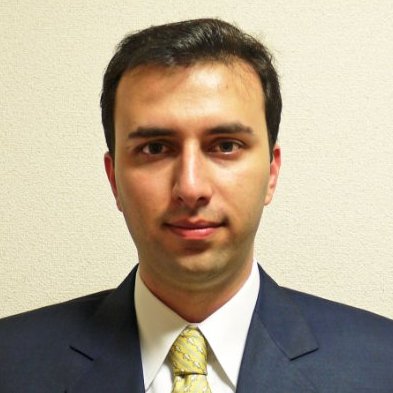
Visit of Dr. Sepehri-Amin from NIMS Tsukuba
Dr. Sepehri-Amin from Magnetic Materials Unit, National Institute for Materials Science – NIMS, Tsukuba, Japan, works on the development of Dy-free high performance Nd-Fe-B permanent magnets via microstructure design and modification. We are happy to say that he is visiting our Functional Materials group for one month within the RESPONSE LOEWE excellence programme. During his stay he gave seminar talks on 3rd of July in Darmstadt and on 7th of July at Fraunhofer IKWS Alzenau on his recent works. Further cooperation is planned on Dy-free Nd-Fe-B permanent magnets.
Hessian Minister of Environment Mrs. Priska Hinz visited the LOEWE research cluster RESPONSE
31.01.2015 Within the Week of Science the Hessian Minister of Environment Mrs. Priska Hinz visited the LOEWE research cluster RESPONSE at the Technische Universität Darmstadt. Up to now the rare earth elements (REE) have no adequate substitutes in many high tech applications, especially high performance permanent magnets for wind turbines and electro-mobility are difficult to replace by magnet materials using less critical elements. Additionally, the beneficiation of the REE from their ores has a high environmental impact which puts a question mark behind the sustainability of some novel energy technologies. The RESPONSE project is dedicated to the drastic reduction and complete substitution of REE in permanent magnets. During her visit the Minister visited the labs, was updated on current research activities, followed by discussions about future strategic goals.
MOOC@TU9
MOOC@TU9 presents the wide variety and different perspectives of German engineering courses at TU9 universities, and offers insights into the central issues, contents, structures and work methods of the various disciplines and courses of study. Join us for nine weeks and discover what Excellence in Engineering and the Natural Sciences – Made in Germany at TU9 is all about. Week 5 is about: Models in Material Engineering – From Devices for Nanotechnology to New Magnetics.
Prof. Oliver Gutfleisch explains: Magnetic Materials for green technologies
Permanent magnets are essential materials for everyday life. Every one of us possesses numerous magnets without necessarily being aware of them as they are hidden in computers, speakers, smart phones or also in modern cars in which at least 50 magnets can be found. However, they are also key components in upcoming energy technologies such as windturbines and electromobility. In the session you will learn more about rare earth elements and how modern magnets benefit of their unusual physical and chemical properties. The most important facts about permanent magnets will be discussed and also a critical reflection on the sustainability of rare earth elements and with this the vulnerability of technologies will be part of the session.
Meeting with Japanese delegation of MagHEM
On November 20th we received a Japanese delegation of MagHEM (Technology Research Association of Magnetic Materials for High-Efficiency Motors) contracted with NEDO (New Energy and Industrial Technology Development Organization) funded by METI (Ministry of Economy, Trade and Industry), which is aiming at development of high-performance magnetic materials without rare-earth and high-efficiency motors. All major Japanese magnet producers and major automotive and automotive parts OEMs were represented. Information on common research interests such as in LOEWE Response were exchanged.
New Acta Materialia paper
Loewe et al., Temperature-dependent Dy diffusion processes in Nd–Fe–B permanent magnets, Acta Materialia, Volume 83, 15 January 2015, Pages 248-255
Nd-Fe-B permanent magnets have been coated with Dysprosium and annealed at various temperatures to study the impact of the temperature dependent Dy diffusion processes on both the magnetic properties and the microstructure. When optimum annealing conditions are applied the improved stability against opposing magnetic fields can be observed in the magnets up to a depth of about 3 mm along the diffusion direction.
After the diffusion treatment, the specific “core-shell” microstructure has been investigated with WDX and STEM EDX. While in the proximity of the Dy – coated surface, each grain has a Dy enriched shell with a Dy – content of around 6 at.%, the Dy concentration decreases exponentially to about 1.8 at.% after a diffusion depth of 400 µm and to about 1 at.% after a diffusion depth of 1500 µm.
An epitaxial relation between Dy – poor core and Dy – rich shell was observed by EBSD. This finding is supported by results obtained with Kerr microscopy.
News 2014
Conference of the European Rare Earths Competency Network (ERECON), presented the summary report of the expert´s panel
At the final conference of the European Rare Earths Competency Network (ERECON), which took place on 16 October 2014 at the Politecnico di Milano, the summary report of the expert´s panel was presented. The report looks at ways to best ensure the affordable, sustainable, and secure supply of rare earths for Europe and the rest of the world. Prof. Gutfleisch (TU Darmstadt) and Dr. Gauß (Fraunhofer IWKS) made significant contributions to the topics substitution and recycling of rare earths.
More infos
Wissenschaftsminister überreicht Förderbescheide
Im Zentrum steht das LOEWE-Projekt zur Schonung seltener Erden
Der hessische Wissenschaftsminister Boris Rhein hat am 05. Juni bei einer Feierstunde an der TU Darmstadt Fördergelder in Höhe von rund sieben Millionen Euro aus der LOEWE-Initiative zur Förderung exzellenter Forschung übergeben – sie gehen an die TU Darmstadt und an drei hessische Unternehmen.
The news article by TU Darmstadt can be found here.

hoch3 Forschen: “High-performance magnets”
In the current issue of the TU Darmstadt maganzin hoch3 Forschen Prof. Oliver Gutfleisch was interviewed on the topic of permanent magnetic marterials.
The whole issue can be downloaded free of charge here.

Moderne Rohstoffe – Raubbau oder Nachhaltigkeit?
Chancen und Risiken für unsere Gesellschaft
Seltene Erden, Phosphor und Wertschöpfungskette: Im Rahmen eines Universitätstags erörtern Experten die Verfügbarkeit und den Gebrauch von modernen Rohstoffen – zum Beispiel aus umwelt- und volkswirtschaftlicher Sicht. Rohstoffe sind für Gesellschaft und Wirtschaft unverzichtbar, ihre Verfügbarkeit beeinflusst zukünftige Technologieentwicklungen.
More information can be found on the TU Darmstadtwebsite.
G8 Project Workshop at TU Darmstadt
On May 9th, 2014 the second Workshop of the G8 Project was held at Technical University of Darmstadt. Partners from US, Japan and Germany attended the meeting, presenting their latest studies on the topic of “Rare-earth Free Permanent sustainable for the Next Generation”. Prof. Gutfleisch (TUDA) opened the meeting and was followed by Prof. Suzuki (MINT – University of Alabama) who presented the recent experimental results on MnAl and MnBi thin films. Dr. Sepehri-Amin (NIMS) presented the microstructure analysis on the MnAl, MnBi and MnRh thin films. Magnetic properties of melt-spun ribbons and mechano-chemically synthesized MnBi and MnGa were presented by Prof. Hadjipanayis (University of Delaware). Dr. Göring from the Max Planck Institute Stuttgart presented the recent XMCD studies on MnBi samples. Presentations were completed by talks of M.Sc. Jian and Dr. Ener from Technical University of Darmstadt on bulk MnAlC and MnGa.

DGM-Fachausschuss Funktionsmaterialien gegründet
Am 23. Mai 2014 kamen etwa 60 interessierte Materialwissenschaftler und Werkstofftechniker zur konstituierenden Sitzung zum neuen Fachausschuss „Funktionsmaterialien“ der Deutschen Gesellschaft für Materialkunde (DGM) an der TU Darmstadt, Fachbereich Materialwissenschaft, zusammen. Prof. Dr. Gutfleisch als Sprecher des FA eröffnete die Sitzung. Teilnehmer waren sowohl Studenten, Doktoranden und Hochschulprofessoren als auch Vertreter aus der Industrie.
Opening ceremony of our new building M3
The name of the new building M3is an acronym for “magnets, molecules and materials” which are the research topics of the scientists from the department of Chemistry and Materials Science who moved in recently. On 29 October 2013 the new laboratory and office building was presented to the public with a festive opening.
Here you can find the news article on the TU Darmstadt website.
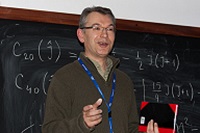
Prof. Michael Kuzmin
We congratulate our group member Michael Kuzmin to his professorship at the University of Marseille, starting on 1st of September 2014.
Visit of Prof. Victorino Franco
We welcome Prof. Victorino Franco from Universidad de Sevilla, to our group of Functional Materials for the time of two months. Till end of October 2014 he will stay with us, working on magnetocaloric materials.
High energy product in Battenberg structured magnets
Bance et al., Influence of defect thickness on the angular dependence of coercivity in rare-earth permanent magnets, Applied Physics Letters, Volume 104, 2014, Pages 182408ff
In the paper we present results from micromagnetic simulations that assess the performance of multi-phase nanostructured permanent magnets, whose cross-section resemble that of a Battenberg cake. By including a super-hard outer shell we are able to counteract the effects of thermal fluctuations and surface defects, both of which are detrimental to the performance of such permanent magnets. Such magnets are important for the motors in electric vehicles and for the generators in wind turbines, and these machines usually operate at elevated temperatures
DOI: 10.1063/1.4876451






